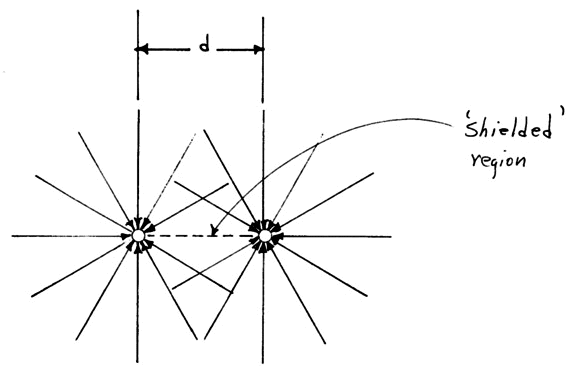The Nature of Gravitation
( 5-21-1985 )

A. Remarks
(1) Since ‘mass’ results in increased rhysmon density or ‘excess’ directed rhysmonic vectors, the number of such vectors going through a sphere at any radius will remain the same. However, the number of lines or vectors crossing a unit area of the surface of the sphere will depend on the radius, and thus the density of vectors, or in this case, the gravitational flux, will fall off as the square of the radius.
(2) Therefore, as the masses separate, the vector component in direct line with the masses is weaker or less. At large distances, i.e., astronomical, the effect between ‘small’ masses is small indeed. Yet, the effect is still there, and if undisturbed by other processes, these masses will receive impulses on opposite sides in excess of those on facing sides, and this will be impelled toward each other.
(3) As the masses approach, additional rhysmonic shielding takes place, and the effect is accelerated, e.g., the acceleration of gravity, g, near earth. Thus, this is the ‘force’ of gravitation.